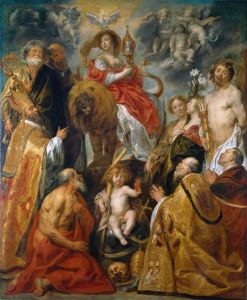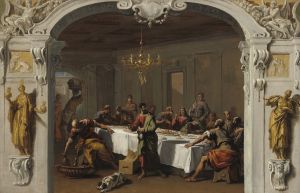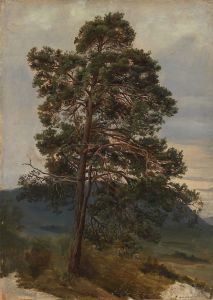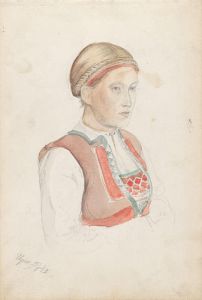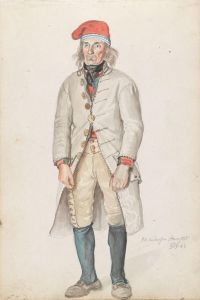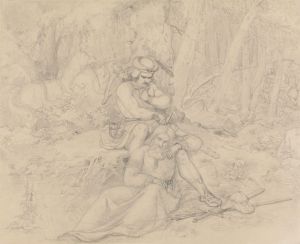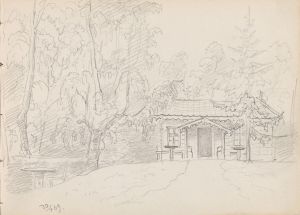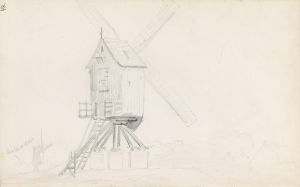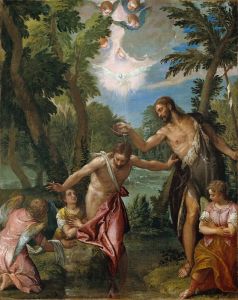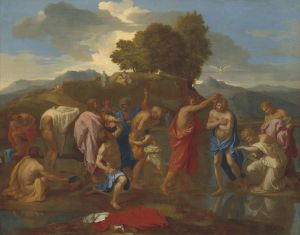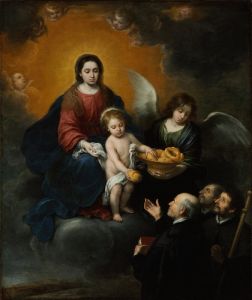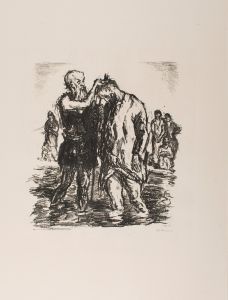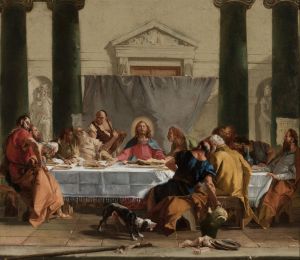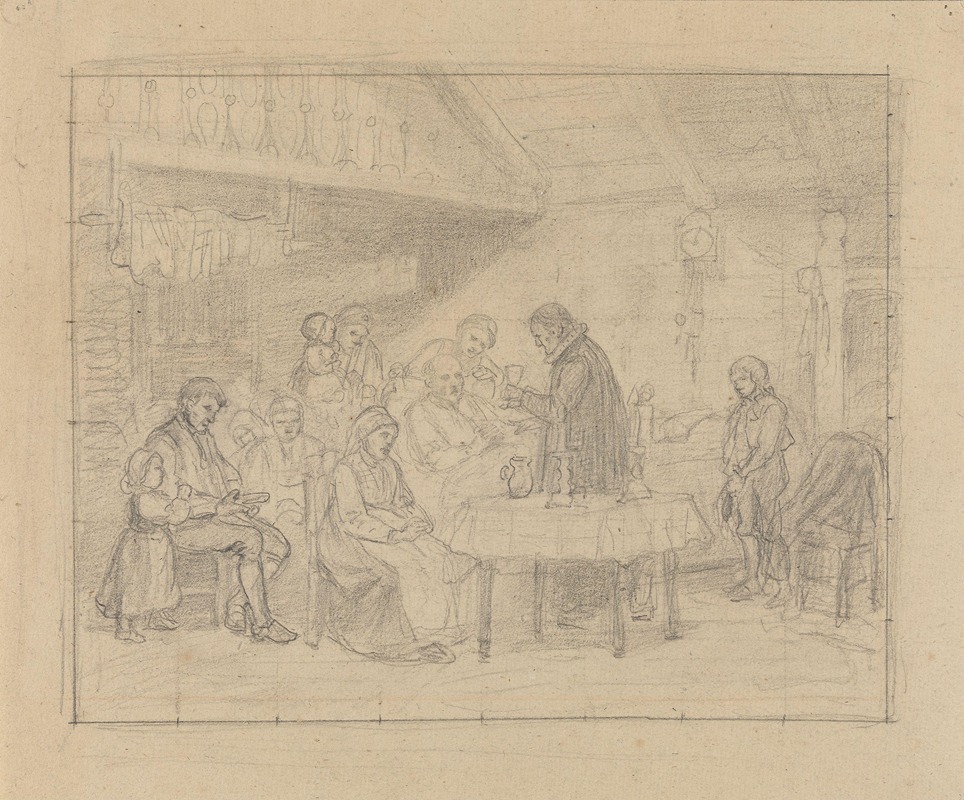
Det siste sakrament
A hand-painted replica of Adolph Tidemand’s masterpiece Det siste sakrament, meticulously crafted by professional artists to capture the true essence of the original. Each piece is created with museum-quality canvas and rare mineral pigments, carefully painted by experienced artists with delicate brushstrokes and rich, layered colors to perfectly recreate the texture of the original artwork. Unlike machine-printed reproductions, this hand-painted version brings the painting to life, infused with the artist’s emotions and skill in every stroke. Whether for personal collection or home decoration, it instantly elevates the artistic atmosphere of any space.
Adolph Tidemand's painting Det siste sakrament (translated as The Last Sacrament) is a significant work by the renowned Norwegian artist, created in 1869. Tidemand, a central figure in Norwegian Romanticism, is best known for his depictions of rural life, religious practices, and national identity during the 19th century. This painting exemplifies his ability to capture the emotional depth and cultural traditions of his time.
Det siste sakrament portrays a solemn and intimate moment in a Norwegian rural setting, where a priest administers the last sacrament to a dying individual. The scene is characterized by its emotional intensity and attention to detail, reflecting Tidemand's dedication to realism and his interest in the customs and rituals of Norway's rural communities. The composition focuses on the interaction between the priest, the dying person, and the gathered family members, emphasizing themes of faith, community, and the passage of life.
The painting is notable for its use of light and shadow, which enhances the emotional atmosphere of the scene. Tidemand employs a warm, subdued palette to convey a sense of reverence and intimacy. The expressions and body language of the figures are meticulously rendered, capturing the gravity of the moment and the deep connection between the participants.
Adolph Tidemand was deeply influenced by his travels throughout Norway, where he studied local traditions and folklore. His works often reflect his observations of rural life and his commitment to preserving Norwegian cultural heritage. Det siste sakrament is a testament to his ability to combine artistic skill with ethnographic interest, creating works that resonate with both emotional and historical significance.
The painting is part of Tidemand's broader body of work, which includes other notable pieces such as Haugianerne (The Haugeans) and Brudeferd i Hardanger (The Bridal Procession in Hardanger), the latter created in collaboration with Hans Gude. These works collectively contributed to the development of a distinct Norwegian national art during the 19th century.
Today, Det siste sakrament is recognized as an important example of Tidemand's artistry and his role in shaping Norwegian cultural identity through art. The painting is housed in the National Museum of Art, Architecture and Design in Oslo, where it continues to be appreciated for its historical and artistic value.





